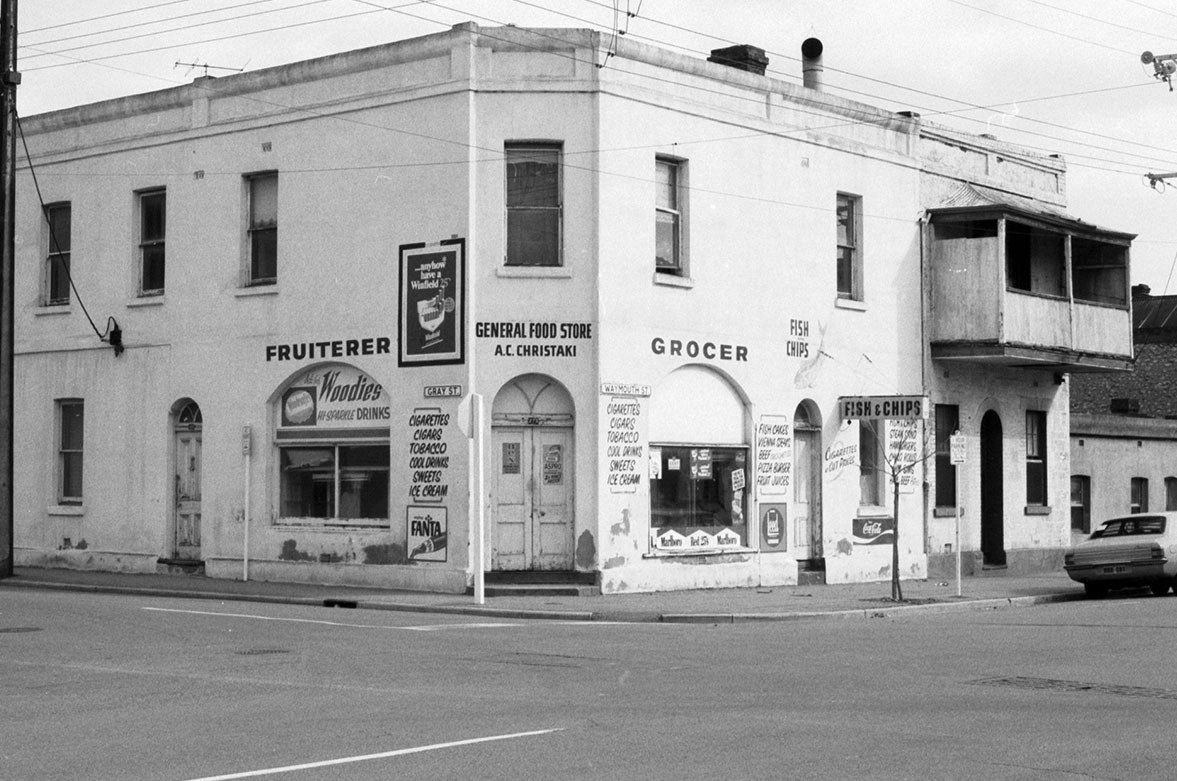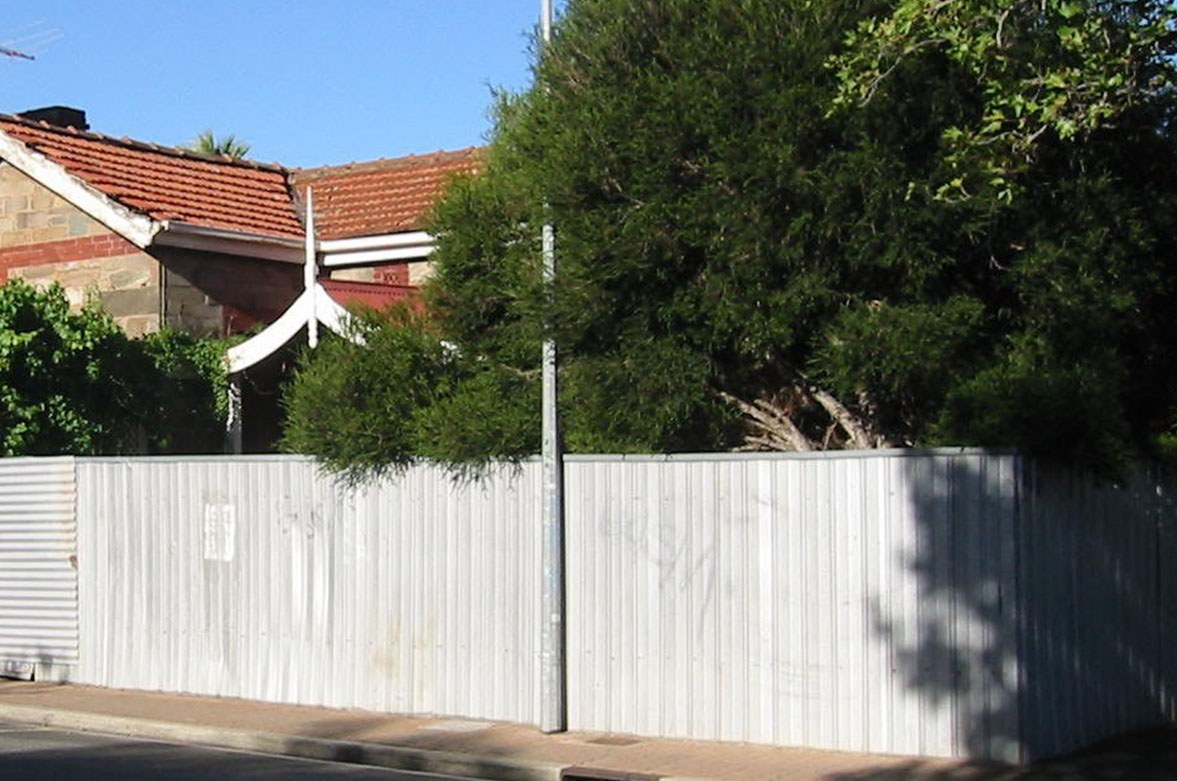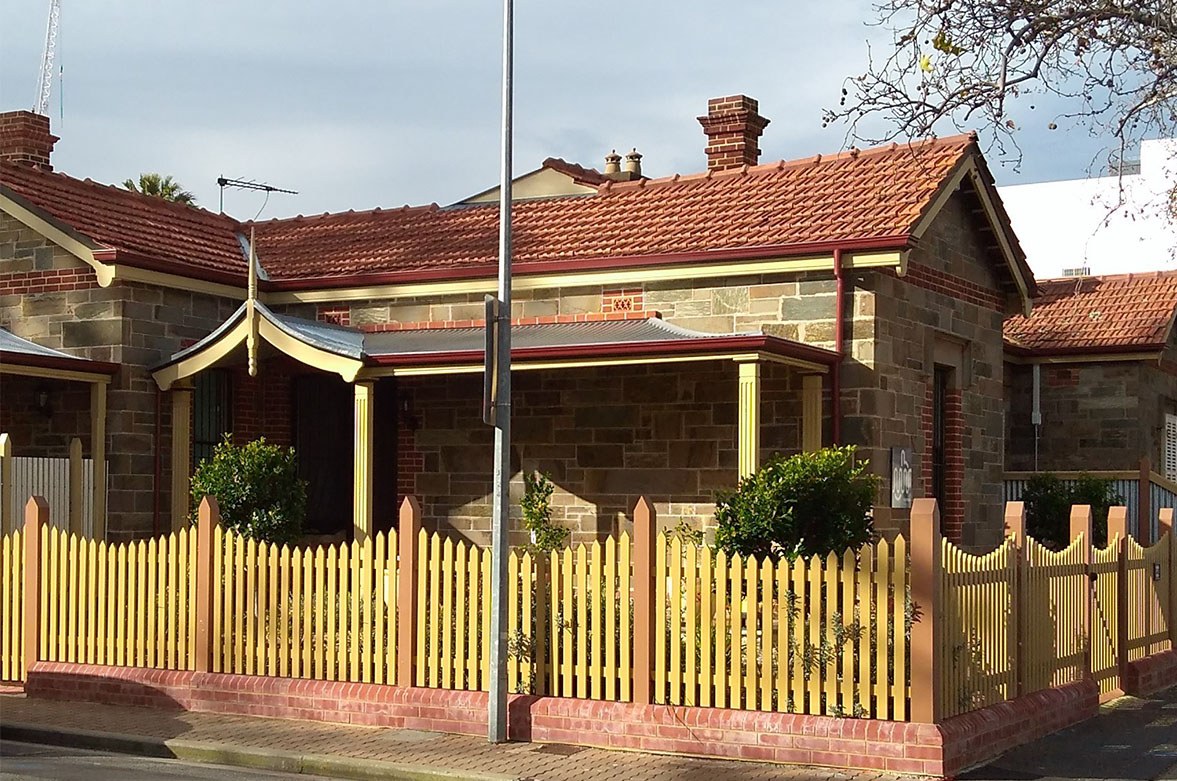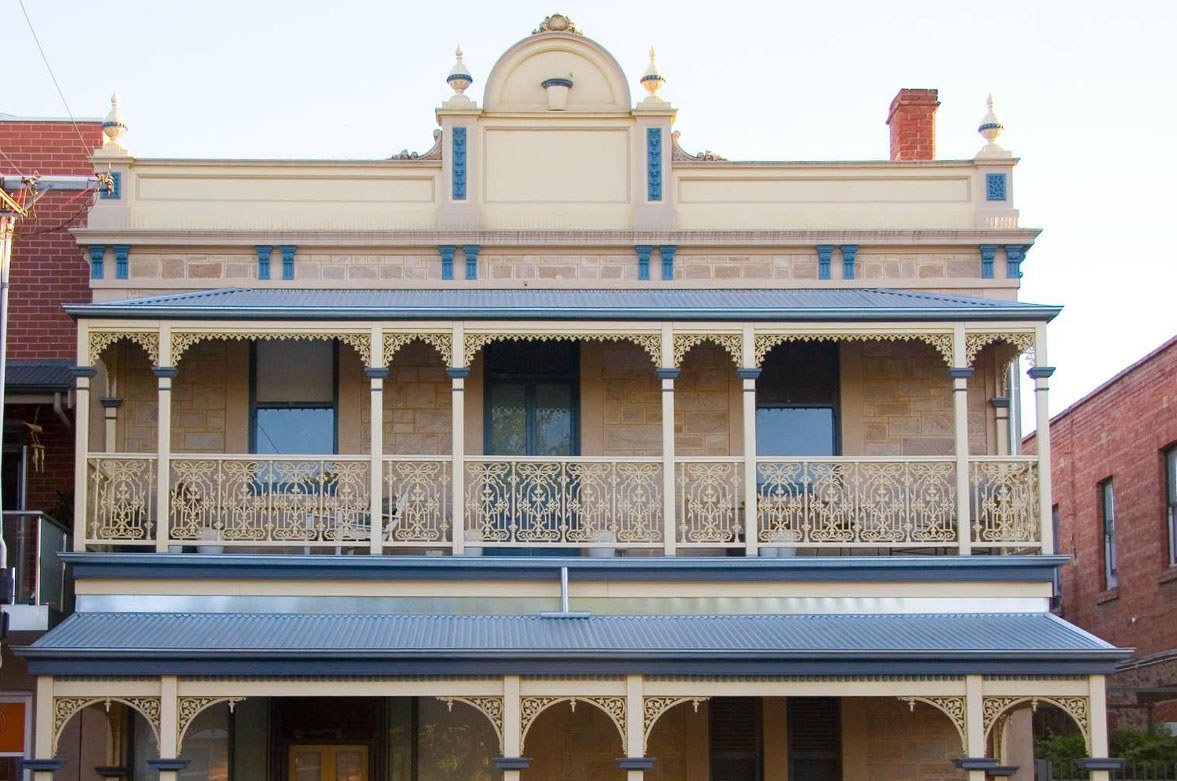Heritage Incentives Scheme case studies
The Heritage Incentives Scheme (HIS) is the most substantial local government heritage grant scheme in Australia.
The most common projects that receive funding through the HIS are:
- re-roofing
- verandah reconstruction
- front fences
- paint removal and re-pointing
- salt damp (undersetting or chemical injection) and stone/brick repairs
- professional documentation and technical reports
- conservation management plans
The following case studies demonstrate how the impressive results help breathe character not just into the building, but add to the streetscape and area overall.
Waymouth Street Adelaide


Constructed in 1852 as a twelve roomed two storey shop and house for John Paull, storekeeper. It remained in the family for over 60 years.
Funding: $17,500.00 was provided in 2008.
Works: Professional advice and documentation, render removal, stone repairs and balcony reinstatement.
Grote Street Adelaide


This house is part of an early 20th century subdivision built for R. Ruthven Smith between 1903-1905. Thirteen of the original seventeen houses remain today along Gray Street, Grote Street and Ruthven Avenue.
Funding: $76,000 was provided in 2017.
Works: Professional advice and documentation, roof repairs, verandah reconstruction, repointing and a picket fence.
Wakefield Street Adelaide


This house was constructed in 1871 for Reverend Francis William Cox, the first pastor of the Hindmarsh Square Congregational Church.
Funding: $69,000 funding was provided in 2015.
Works: Re-roofing, repointing stonework and brickwork, reinstatement of the verandah/balcony and salt damp repairs.
Sturt Street Adelaide


From the 1920s this building was the home and shop of Afghani herbalist and healer, Hajj Mohammed Alam Khan, who purchased the shop from Singer Sydney Cooper.
Funding: $16,500.00 was provided in 2006.
Works: Professional advice and documentation, paint removal, masonry repairs, repointing and verandah/balcony reconstruction.